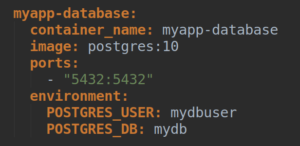This article is the second in a series about system testing:
- Dockerized testing vs end-to-end testing
- How to setup Dockerized testing
- Readable Java system tests with good old JUnit
You may want to read Dockerized testing vs end-to-end testing first.
How to setup Dockerized testing?
A prerequisite for running your tests against a dockerized environment is of course that the service you want to test is packaged as a Docker image. Also, all of the services which the System Under Test (SUT) depends on needs to be dockerized. If you don’t have that, your environment is not fully dockerized and you will suffer the consequences of having to test against external services.
If your SUT is packaged as a Docker image and has no dependencies on other services, you can just start it using “docker run” and run your tests against it. However, usually services have one or more dependencies to other services, such as its own database, a queue and perhaps a external RESTish service that returns nasty XML. You want each of these services in their own container. To spin up a bunch of docker containers, you can use docker-compose.



